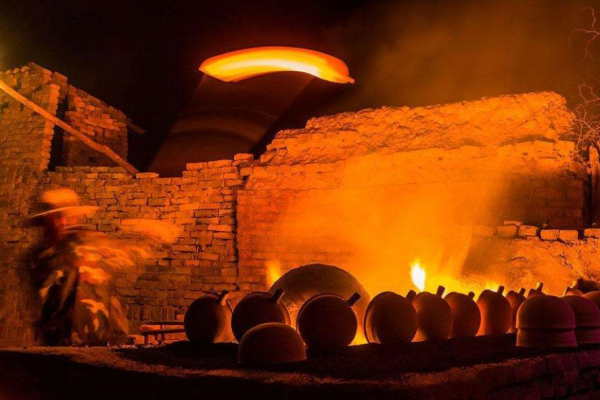Definicja cegieł ogniotrwałych: Cegły refrakcyjne to materiały o wysokiej temperaturze, które są używane do linii pieców, piece, i inne urządzenia do przetwarzania termicznego. Zostały zaprojektowane tak, aby wytrzymać ekstremalne temperatury, surowe chemikalia, and other conditions that would cause regular building materials to fail.
Importance of choosing the right refractory material for your application: Selecting the appropriate refractory material is critical for maintaining the integrity of the furnace and achieving optimal performance. Using the wrong material can result in costly repairs, reduced efficiency, and even safety hazards.
Overview of the different types of refractory bricks: Refractory bricks come in many types and compositions, each with its own unique properties and advantages. Some of the most common types include firebricks, cegły o wysokiej zawartości tlenku glinu, cegły silikatowe, cegły mulitowe, gliniane cegły, magnesia bricks, I AZS bricks.


Understanding Your Application
The importance of understanding the operating conditions of your furnace/kiln/oven: To select the right refractory material, it is essential to have a thorough understanding of the environment in which it will be used. Factors such as temperature, Skład chemiczny, and other variables will all affect the performance of the material.
Factors to consider when choosing refractory bricks: When selecting refractory bricks, there are several key factors to consider. These include temperature range, Skład chemiczny, odporność na ścieranie, odporność na szok termiczny, przewodność cieplna, and porosity.
Rodzaje cegieł ogniotrwałych
A. Cegły ogniotrwałe: Firebricks are made from refractory clay and have excellent thermal shock resistance. They are commonly used in high-temperature applications such as furnace linings and chimney linings.
B. Cegły o wysokiej zawartości tlenku glinu: High alumina bricks are made from alumina and other refractory materials, and are known for their excellent strength and abrasion resistance. They are often used in steelmaking and other heavy industry applications.
C. Cegły krzemionkowe: Silica bricks are made from silica and are resistant to acidic environments. They are often used in the glass and ceramics industries.
D. Cegły mulitowe: Mullite bricks are made from mullite, a type of mineral that is known for its high-temperature resistance. They are often used in the production of iron and steel.
E. Gliniane cegły: Clay bricks are made from fire clay and are often used in low-temperature applications such as fireplace linings and chimneys.
F. Cegły Magnezja: Magnesia bricks are made from magnesia and are highly resistant to alkaline environments. They are often used in the production of cement and lime.
G. Cegły AZS: AZS fire bricks are made from alumina, zirconia, i krzemionka, and are highly resistant to high temperatures and thermal shock. They are often used in the glass and steel industries.


Choosing the Right Refractory Bricks Material
Factors to consider when choosing a specific refractory brick material
Chemical composition: Each type of refractory brick is designed to handle specific chemical compositions. Ensure that the material you choose is suitable for your application’s chemical composition.
Thermal conductivity: Thermal conductivity measures the rate at which heat travels through a material. If your application requires efficient heat transfer, consider choosing a brick with high thermal conductivity.
Abrasion resistance: Abrasion resistance is essential for applications that involve material flow or high mechanical impact. If your application requires abrasion resistance, consider choosing a firebrick with high hardness.
Porowatość: Porosity affects the brick’s ability to withstand thermal shock. If your application involves rapid temperature changes, consider choosing a fireproof brick with low porosity.
Comparison of The Different Types of Refractory Bricks
Strengths and weaknesses: Each type of refractory brick has its own strengths and weaknesses, depending on the application. Na przykład, firebricks have excellent thermal shock resistance, but poor abrasion resistance.
Costs: The costs of different refractory firebrick materials vary depending on the raw materials used and the manufacturing process. Consider your budget when choosing a specific type of refractory brick.


Tips for Selecting The Right Refractory Brick Material for Your Application
Consult with an expert: If you’re unsure which type of refractory brick is best for your application, consider consulting with an expert. They can help you make an informed decision based on your specific needs.
Consider the operating conditions: Your application’s operating conditions, takie jak temperatura, Skład chemiczny, and mechanical impact, should guide your choice of refractory brick material.
Consider the application’s lifespan: If your application requires long-term use, consider choosing a refractory brick material that has a longer lifespan and requires less maintenance.
Installation and Maintenance of Refractory Bricks
Best practices for installing refractory bricks
Ensure that the fire-resistant bricks are properly aligned and leveled.
Use high-quality mortar and insulation materials to ensure efficient heat transfer and insulation.
Allow the bricks to cure properly before firing the furnace.
Common Maintenance Issues and How to Address Them
Cracks and damage: Cracks and damage can occur due to thermal shock or mechanical impact. Regular inspections can help identify issues before they become severe.
Corrosion: Corrosion can occur due to the application’s chemical composition. Choosing a refractory brick material that’s resistant to corrosion can help prevent this issue.
Erosion: Erosion can occur due to material flow or abrasion. Choosing a resistance brick material with high abrasion resistance can help prevent this issue.
The Importance of Regular Inspections and Repairs
Regular inspections can help identify issues before they become severe and lead to costly repairs.
Prompt repairs can help extend the lifespan of your cegła ogniotrwałe dla pieców and prevent damage to other furnace components.
Wniosek
Recap of key points: Choosing the right refractory firebrick material for your application is crucial for ensuring efficient and safe furnace operation.
Final thoughts: By considering the operating conditions, lifespan, and maintenance requirements of your application, you can make an informed decision about which refractory brick material to choose.
With proper installation and maintenance, your refractory brick can provide long-term, reliable performance.
